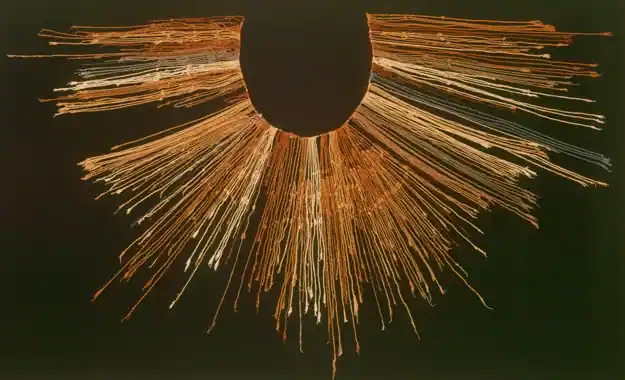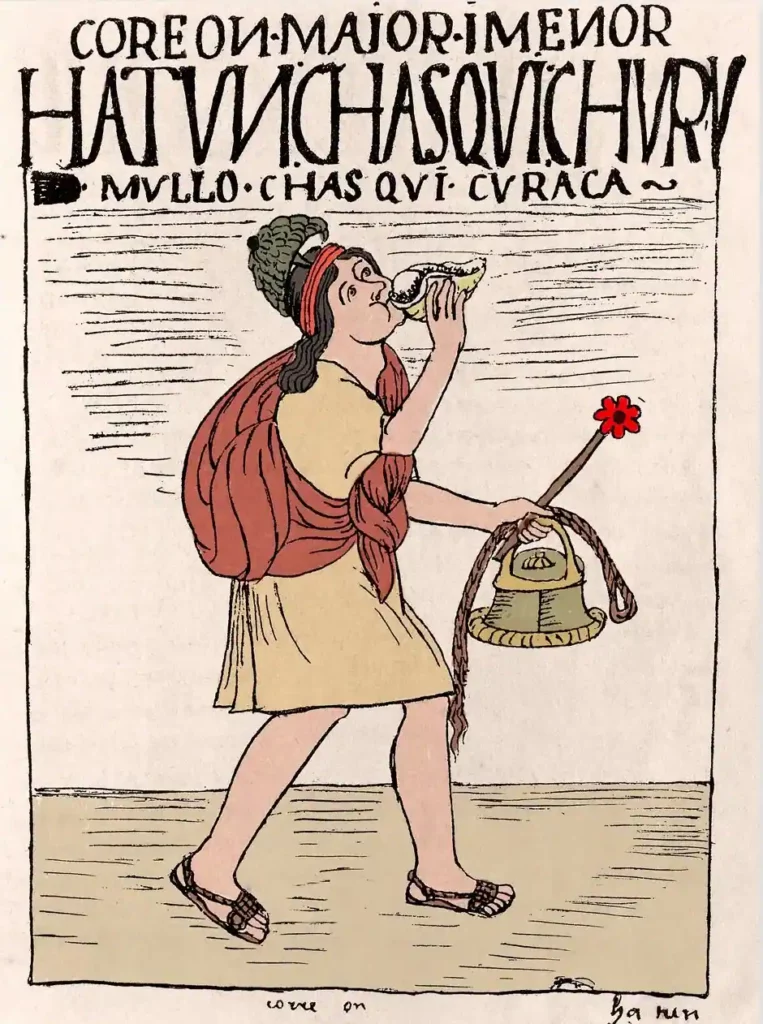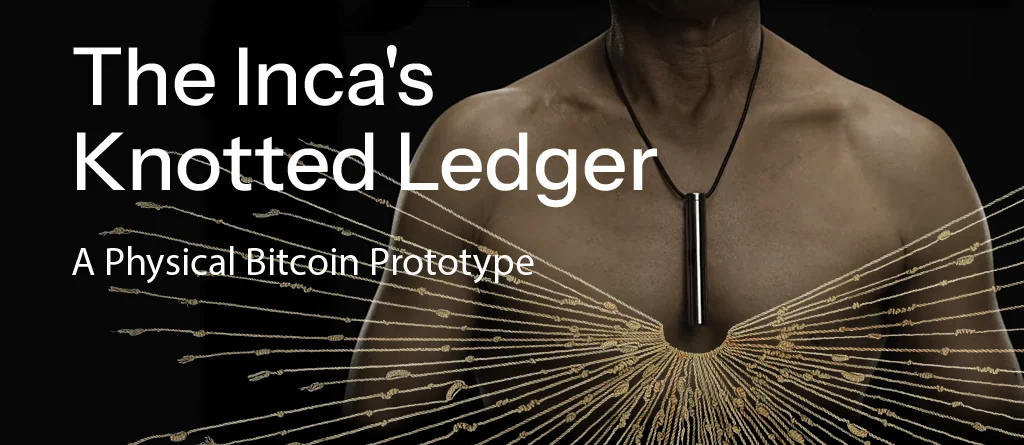
In the annals of human civilization, the Inca Empire presents a stunning paradox. At its zenith, it governed millions across the Andes, managing a sophisticated economy, a powerful military, and vast public works that rivaled those of ancient Rome. They achieved this staggering level of organization without a known system of alphabetic or syllabic writing. This fact has long baffled historians, but the answer lies in an information technology so advanced that its core principles are hauntingly familiar to the most disruptive digital system of our own time: Bitcoin.
The Inca’s solution was the quipu, a complex system of knotted strings. Recent scholarship has revealed this was not a simple mnemonic device but a tangible, three-dimensional system for recording and transmitting data. It was the administrative backbone of the empire, a physical, distributed ledger whose methods for ensuring security, integrity, and trust serve as a remarkable analog precursor to Bitcoin itself.
An Inca quipu, from the Larco Museum in Lima, Peru.
The Anatomy of a Physical Ledger
To understand the connection, one must first appreciate the quipu’s immense sophistication. A quipu consists of a primary cord from which numerous pendant strings are suspended. Information was encoded through a multi-layered system of knots, colors, and structure. The encoding was remarkably complex, utilizing a decimal system where a knot’s position determined its value.
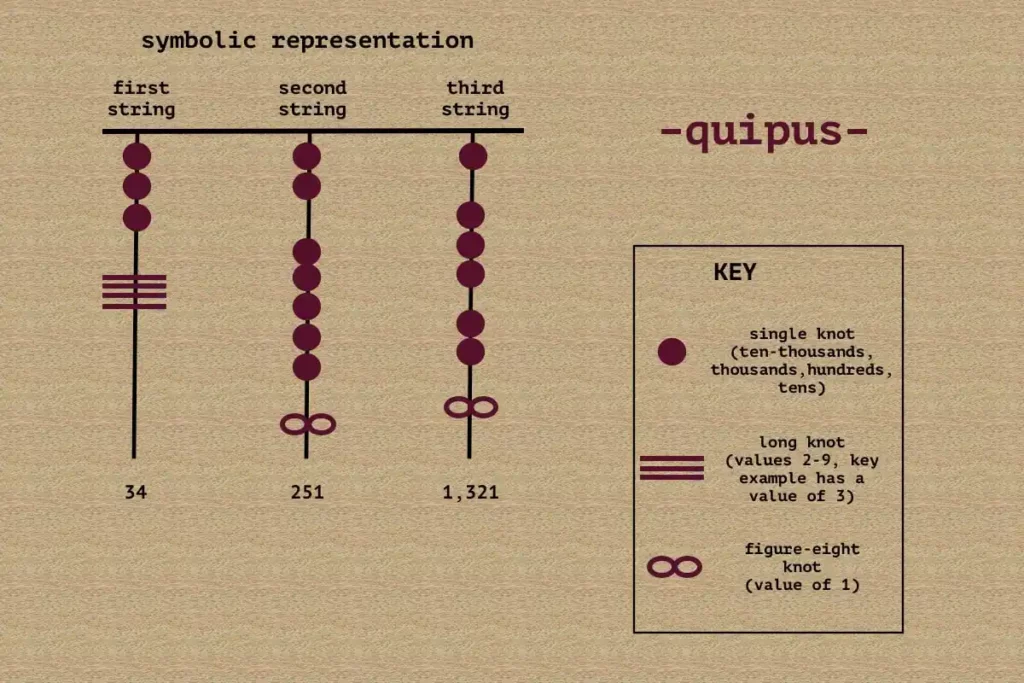
Symbolic representation of quipus. Image by Gina Cronin.
However, the depth of this system goes far beyond simple counting. Leading Andean scholar Gary Urton (2003) revolutionized quipu studies by proposing that they functioned as a complex, seven-bit binary information system. In his seminal work, Signs of the Inka Khipu, Urton argues that information was encoded through a series of binary choices: the type of knot used, the spin or ply direction of the string (S-spun vs. Z-spun), the color of the cord, and more. This structure allowed for over 1,500 distinct data-encoding possibilities, turning each quipu into a dense, data-rich physical object: a self-contained record of value and information. The genius of the system lay not just in what it recorded, but in the principles that guaranteed its trustworthiness, principles which find a remarkable echo in the design of Bitcoin.
Physical “Proof-of-Work”: Securing the Ledger with Energy
In the world of Bitcoin, the integrity of the public ledger is secured through a process called “Proof-of-Work.” To add a new “block” of transactions to the chain, powerful computers must expend immense amounts of electrical energy to solve a mathematical puzzle. This process is intentionally difficult and costly, making it prohibitively expensive for a bad actor to alter the history of transactions.
The Inca employed a physical, human-powered version of this very principle. The creation of a quipu, as detailed by the complexity described in Urton’s work, was an incredibly resource-intensive act. The careful sourcing and dyeing of wool, the precise spinning of cords to a specific binary ply, and the intricate tying of thousands of knots by a trained specialist represented a significant expenditure of human time, skill, and energy. This inherent “costliness” functioned as a form of physical Proof-of-Work. A fraudulent quipu could not be created casually. To forge a convincing record would require an enormous investment of labor and expertise, making it an impractical endeavor. This energy barrier was the quipu’s primary defense, ensuring that records were authentic and resistant to tampering, just as Proof-of-Work secures Bitcoin today.
A Decentralized Network of Validators: The Quipucamayocs
The Bitcoin network is not controlled by any single entity like a bank or government. It is maintained by a global network of thousands of “nodes” that all hold a copy of the ledger and independently validate every transaction against a shared set of consensus rules. This decentralization is what gives Bitcoin its power and censorship-resistance.
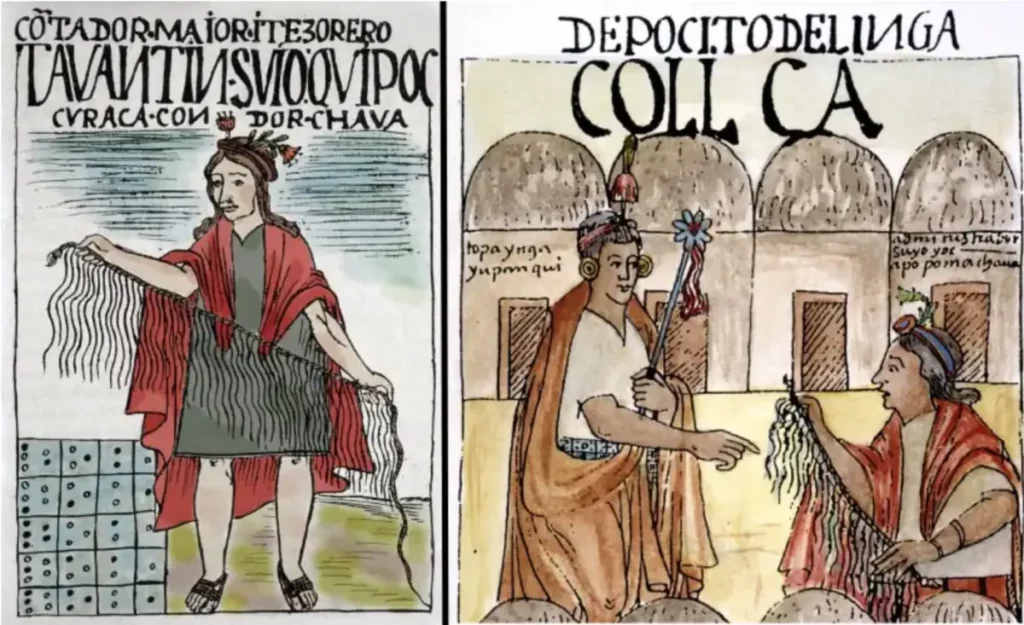
This specific artwork resembles illustrations found in the Nueva Corónica y Buen Gobierno, a manuscript created by Felipe Guamán Poma de Ayala, an Indigenous Peruvian chronicler, between 1615 and 1616.
The Inca developed an analog version of this with their guild of specialists, the Quipucamayocs, or “keepers of the knots.” The cultural authority of this system was vested in these individuals. As described by ethnohistorian Frank Salomon (2004) in The Cord Keepers, these specialists were not just scribes but trusted community figures with immense responsibility. They formed what was, in effect, a decentralized network of human validators. Stationed across the vast empire, each Quipucamayoc was trained in the same unbreakable protocol of knots and colors. This meant they could not only create records but, more importantly, independently read and verify any quipu they encountered. The integrity of the empire’s data did not rely on a single, fallible authority in Cusco, but on the distributed consensus of this network.
A Peer-to-Peer Protocol for Data Transfer
When a Bitcoin transaction is made, it is broadcast across a peer-to-peer network, passed from node to node until it propagates globally. The integrity of the data is secured cryptographically, so it doesn’t matter who transmits it; the information itself is trustworthy.
The Inca’s legendary road network, detailed by archaeologist John Hyslop (1984) in The Inka Road System, was traversed by relay runners known as chasquis. This system functioned as a physical peer-to-peer data transfer protocol. The quipu itself was the self-contained “data packet.” Unlike an oral message, it could not be distorted by memory or malice. It was handed from runner to runner until it reached its destination, where its data could be verified by another Quipucamayoc. Concrete case studies have demonstrated how sets of quipus functioned as coherent accounting ledgers, meticulously cross-referencing tribute payments from different social groups (Medrano and Urton 2018).
A Chasquis (or Chaskis), messenger runner, with a qipi on his back and holding a Quipu – Playing the pututo (conch shell trumpet) – ink drawing from Felipe Guamán Poma de Ayala
While their accounting function is well-documented, the quipu’s capabilities likely extended far beyond numerical data. Groundbreaking research, particularly by Sabine Hyland (2017), suggests that some quipus functioned as logosyllabic systems capable of recording non-numerical narratives. This would have made them a true, multi-purpose system of record, potentially encoding the royal genealogies essential for establishing rights to rule, chronicles of important historical events, or even legal codes. Other scholars speculate that the intricate patterns could have tracked the complex astronomical observations that governed the Inca’s sophisticated agricultural calendar and the precise timing of religious ceremonies tied to the solstices and equinoxes, making the quipu a versatile and sophisticated information system.

Photo of a Quipu in the Museo de Arte de Lima (MALI)
A Timeless Quest for Incorruptible Truth
The quipu represents a brilliant analog solution to the very challenges that a decentralized digital system like Bitcoin solves today: how to create a reliable, tamper-resistant, and verifiable record of value without a central authority. In both the Inca Empire and the world of Bitcoin, truth is not decreed by a central power but is an emergent property of a transparent, resource-intensive, and distributed system. The medium has changed from spun wool to cryptographic code, and the energy source from human labor to computational power. Yet this very evolution has brought the quest for security full circle, as today’s users etch their digital secrets into indestructible plates of steel, seeking a tangible permanence that the Inca themselves would have understood. The fundamental desire for a decentralized, verifiable public ledger, the very idea at the heart of Bitcoin, remains knotted into our very history.
References
- Hyland, Sabine. 2017. “Logosyllabic Khipu: A New Reading of an Andean Writing System.” Latin American Antiquity 28, no. 1: 125-142.
- Hyslop, John. 1984. The Inka Road System. New York: Academic Press.
- Medrano, Manuel, and Gary Urton. 2018. “Toward the Decipherment of a Set of Inka Khipus from the Santa Valley, Peru.” Ethnohistory 65, no. 1: 1–23.
- Salomon, Frank. 2004. The Cord Keepers: Khipus and Cultural Life in a Peruvian Village. Durham: Duke University Press.
- Urton, Gary. 2003. Signs of the Inka Khipu: Binary Coding in the Andean Knotted-String Records. Austin: University of Texas Press.

